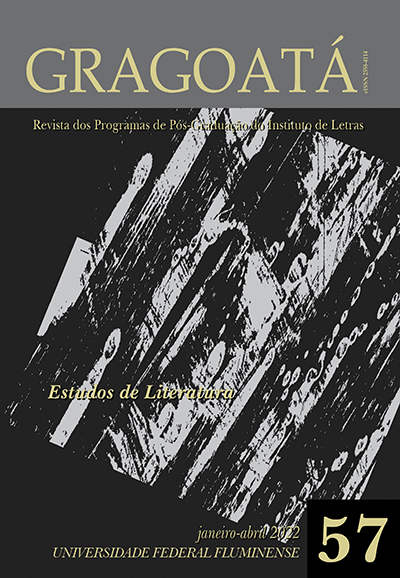Paradoxos e promessas da natureza-morta em poesia: notas de leitura sobre Lu Menezes e Suzanne Doppelt
READING NOTES ON LU MENEZES AND SUZANNE DOPPELT
DOI:
https://doi.org/10.22409/gragoata.v27i57.51376Palavras-chave:
poesia francesa, poesia brasileira, contemporaneidade, natureza-morta, imagem, imanênciaResumo
O gênero pictórico chamado de “natureza-morta” está envolvido por uma ambivalência fundamental, que se manifesta em diferentes níveis. Neste artigo, proponho abordar a ambivalência do gênero em dois desses níveis, que me parecem ser os mais importantes e os mais produtivos em termos de um pensamento poético sobre a relação entre homem, linguagem e mundo. O primeiro é o nível da história das transformações das formas artísticas; o segundo é o nível de uma filosofia da imagem em sua oscilação entre uma pulsão que se poderia chamar de ritmo-plástica e uma pulsão representativa. Modulando essas ambivalências, a apropriação da natureza-morta em poesia (poemas que se referem a cenas de natureza-morta ou que interpretam com meios verbais o universo pictórico característico da natureza-morta) permite pensar a potência e os limites da arte em relação à experiência. É o que se procurará demonstrar através da leitura de textos poéticos de Lu Menezes e de Suzanne Doppelt.
Downloads
Downloads
Publicado
Edição
Seção
Licença
AUTORIZAÇÃO
Autores que publicam em Gragoatá concordam com os seguintes termos:
Os autores mantêm os direitos e cedem à revista o direito à primeira publicação, simultaneamente submetido a uma licença Creative Commons Atribuição 4.0 Internacional (CC BY 4.0), que permite o compartilhamento por terceiros com a devida menção ao autor e à primeira publicação pela Gragoatá.
Os autores podem entrar em acordos contratuais adicionais e separados para a distribuição não exclusiva da versão publicada da obra (por exemplo, postá-la em um repositório institucional ou publicá-la em um livro), com o reconhecimento de sua publicação inicial na Gragoatá.
A Gragoatá utiliza uma Licença Creative Commons - Atribuição CC BY 4.0 Internacional.











